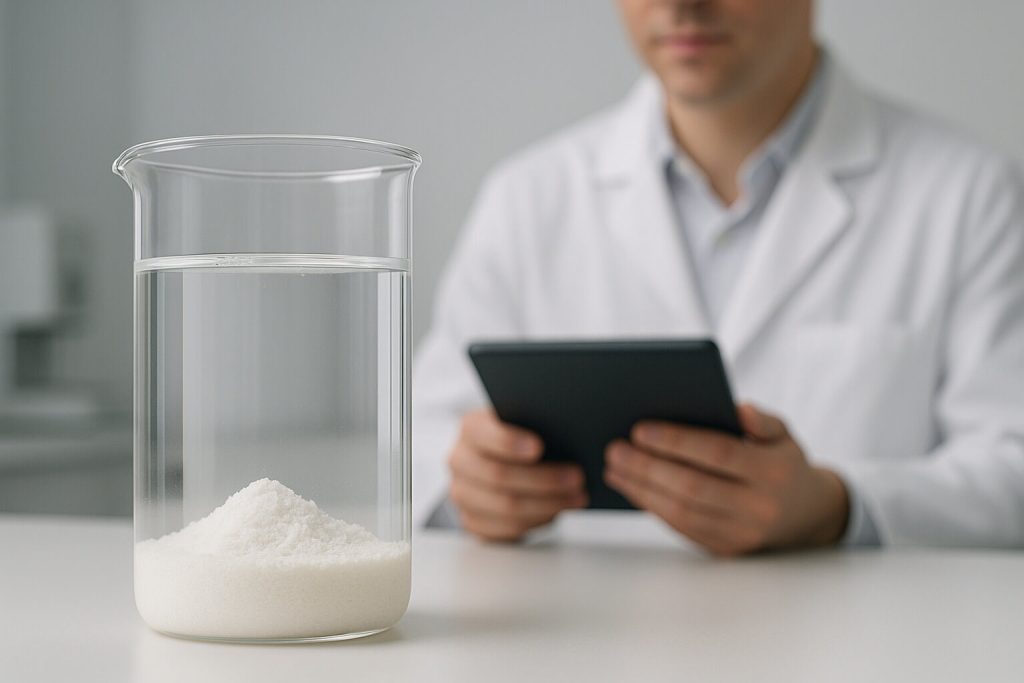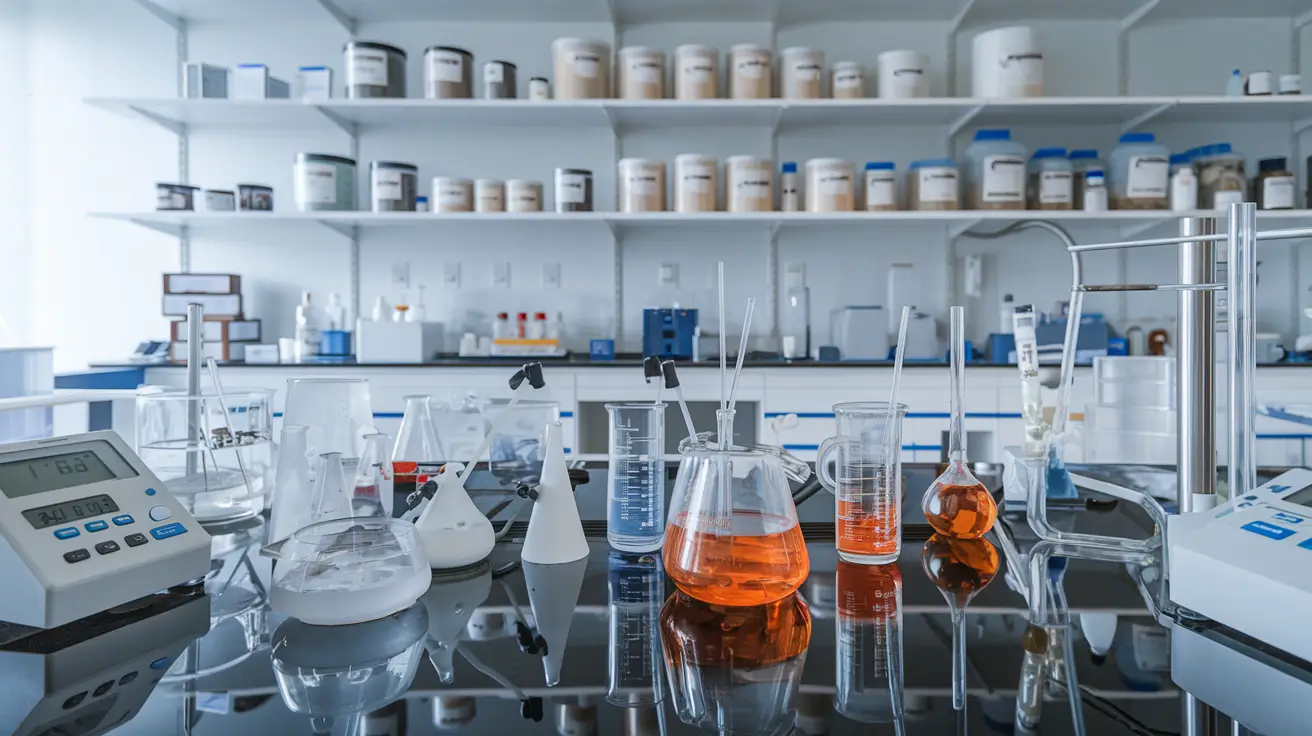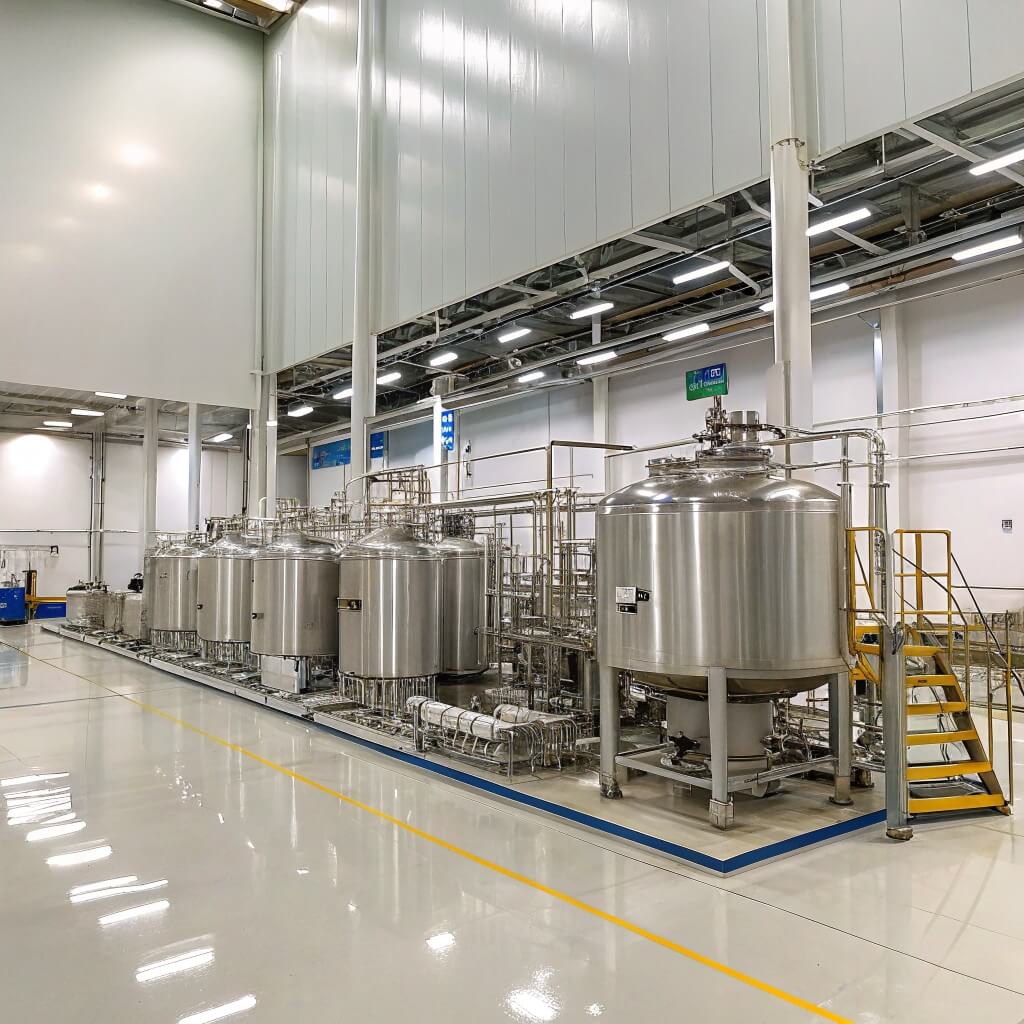Understanding how molecular weight and hydroxypropyl content affect HPMC is crucial for professionals across numerous industries. Hydroxypropyl methylcellulose (HPMC) is a vital ingredient used for its binding, thickening, and emulsifying properties in sectors ranging from pharmaceuticals to food production and construction materials. The significance of these traits cannot be understated, as they impact formulation performance and the end product’s effectiveness. This article delves deeper into the relationship between molecular weight, hydroxypropyl content, and HPMC’s overall functionality, aiming to equip decision-makers with the knowledge needed to optimize their formulations and product strategies.

1. Che cosa è l'HPMC e perché è importante?
Hydroxypropyl methylcellulose (HPMC) is a cellulose derivative that serves various industrial functions thanks to its unique properties. Ready for the good part? HPMC is a non-ionic, water-soluble polymer that is widely used in food, pharmaceuticals, and construction. Its importance lies in its versatility, as it can function as a thickener, binder, dispersant, or emulsifier—making it indispensable across many sectors.
In the food industry, HPMC acts as a thickening agent that enhances texture and consistency, particularly in gluten-free products where traditional binders fall short. In pharmaceuticals, it serves as a binder that holds tablet formulations together, improving their integrity and performance once consumed. Moreover, the construction sector utilizes HPMC in mortar and as additives in tile adhesives, improving workability and applying properties.
Additionally, HPMC is seen as a safer alternative to synthetic polymers, which resonates with the growing consumer demand for natural and clean-label products. Its non-toxic nature makes it suitable for medicinal applications, while its biodegradable attributes appeal to environmentally conscious manufacturers. Understanding HPMC’s significance opens the door to its effective application—leading to enhanced product quality and performance across a variety of industries.
| Area di applicazione | Importanza dell'HPMC |
|---|---|
| Prodotti farmaceutici | Used as a binder in tablet formulations |
| Industria alimentare | Enhances texture in sauces, bread, and gluten-free products |
| Costruzione | Improves adhesion and workability of mortar and adhesives |
2. How Do Molecular Weight and Hydroxypropyl Content Influence HPMC Properties?
Molecular weight and hydroxypropyl content are two critical factors that substantially influence the properties of HPMC. But here’s the kicker: these characteristics determine how HPMC behaves in various solutions and applications, ultimately impacting performance.
Molecular weight refers to the size of the polymer chains within HPMC. Higher molecular weight typically leads to greater viscosity and gel-forming capabilities, making it suitable for applications requiring thickening or binding. For instance, HPMC with high molecular weight is advantageous in adhesive formulations, where robust and durable bonding is necessary.
On the other hand, hydroxypropyl content refers to the amount of hydroxypropyl groups incorporated into the cellulose backbone. Increasing hydroxypropyl content can enhance the solubility in cold water and increase thermoreversible gel functionality. In scenarios where rapid dissolution and easy gel formation are required—such as in instant food products—a higher hydroxypropyl content proves essential.
The interplay between molecular weight and hydroxypropyl content is worth noting. For instance, while high molecular weight HPMC offers excellent thickening properties, its compatibility with hydroxypropyl content can significantly alter its solubility and functional utility in various formulations.
Understanding these relationships between molecular weight and hydroxypropyl content equips formulators with the knowledge needed for crafting products that optimize the advantages of HPMC.
| Parametro | Descrizione |
|---|---|
| Peso molecolare | Affects viscosity and thickening capabilities |
| Contenuto di idrossipropile | Modifies solubility and thermoreversible gel formation |
3. What Are the Characteristics of Different HPMC Grades?
Understanding the various grades of HPMC is crucial for selecting the right formulation for specific applications. What’s the real story? HPMC grades are classified based on molecular weight and hydroxypropyl content, and each grade exhibits distinct properties that suit different needs.
Low molecular weight HPMC grades are typically water-soluble and dissolve quickly, making them appropriate for dry mix products where rapid hydration is needed. These grades are often utilized in instant soups or sauces that require immediate blending with water.
Medium molecular weight grades offer a balance between viscosity and solubility. They are versatile and find applications across a wide array of products, from food stabilizers to pharmaceutical formulations. This balanced approach allows formulators the flexibility to use them across numerous sectors.
High molecular weight HPMC grades create significant viscosity and gel strength. They are indispensable in construction, specifically for tile adhesives and mortars, where high bonding and enhanced workability are core requirements. The strong viscosifying properties of these grades also make them ideal for gel applications in both food and pharmaceutical industries.
Each HPMC grade can offer distinct functional properties, making the right choice essential for achieving specific performance outcomes in formulations. By understanding the characteristics of each grade, decision-makers can select suitable HPMC products tailored to their unique needs.
| Grado HPMC | Caratteristiche | Applicazioni tipiche |
|---|---|---|
| Basso peso molecolare | Quick dissolution and low viscosity | Instant foods, powdered drinks |
| Peso molecolare medio | Balanced viscosity and solubility | Food stabilizers, some pharmaceuticals |
| Alto peso molecolare | High viscosity and gel strength | Construction materials, dental applications |
4. How Does Molecular Weight Affect HPMC Performance in Applications?
Molecular weight plays a pivotal role in how HPMC performs across various applications. This is where it gets interesting: the viscosity generated by HPMC is directly influenced by its molecular weight, which in turn affects its suitability for different uses.
Higher molecular weight HPMC serves as a more effective thickening agent due to its ability to create greater amounts of viscosity when dispersed in a solution. For instance, in the pharmaceutical sector, high molecular weight HPMC is instrumental in binder applications, which require the final product to maintain its shape when subjected to forces during production and storage.
Conversely, lower molecular weight HPMC grades can be beneficial in applications requiring quick dissolution and less viscosity. For example, in instant food products, such as sauces, a lower molecular weight allows HPMC to dissolve rapidly, making the production process more efficient while still achieving the desired quality.
The influence of molecular weight extends to stability and shelf life, particularly in sensitive applications. Products formulated with higher molecular weight HPMC can offer better physical stability and resistance to temperature fluctuations, essential for maintaining quality during distribution and storage.
Understanding the implications of molecular weight can greatly enhance product formulation and design, leading to improved performance and customer satisfaction in various industries.
| Peso molecolare | Impatto dell'applicazione | Examples of Use |
|---|---|---|
| Basso peso molecolare | Suitable for fast-hydrating applications | Instant sauces, powdered pharmaceuticals |
| Peso molecolare medio | Versatile across numerous product types | Banking agents in pharmaceutical tablets |
| Alto peso molecolare | Excellent for adhesives and high-stability products | Tile adhesives, gel formulations |
5. How Does Hydroxypropyl Content Modify HPMC Functionality?
Hydroxypropyl content significantly alters the functionality of HPMC, providing unique attributes beneficial across various applications. Ready for the good part? The incorporation of hydroxypropyl groups affects the solubility, thermal stability, and gel-forming ability of HPMC.
Higher hydroxypropyl content improves the solubility of HPMC in cold water, allowing for quicker gel formation and a more easily controllable viscosity, which is especially advantageous for instant food products. This increased solubility makes high hydroxypropyl content HPMC ideal for sauces and gravies, enhancing their smooth texture without compromising quality.
In addition, hydroxypropyl groups also influence the gel strength of HPMC. Products that require thermoreversible gel characteristics often rely on high hydroxypropyl content to achieve the desirable gel consistency while remaining stable under varying temperatures. This is particularly important in both the food and pharmaceutical sectors, where product consistency must be maintained.
Furthermore, the degree of hydroxypropyl substitution can yield a range of functionalities across different formulations. Understanding how hydroxypropyl content modifies HPMC can guide formulators to optimize their products and meet specific performance criteria.
| Contenuto di idrossipropile | Functionality Impact | Aree di applicazione |
|---|---|---|
| Low Hydroxypropyl Content | Limited solubility, lower gel strength | Common in traditional applications |
| Medium Hydroxypropyl Content | Balanced gel formation and viscosity | Pharmaceutical binders, some food products |
| High Hydroxypropyl Content | Excellent solubility in cool water, enhanced thermoreversible gels | Instant food products, sauces |
6. What Are Common Applications of HPMC in Industry?
The versatility of HPMC has led it to be widely adopted in numerous industries, each employing the polymer for a variety of purposes. What’s the real story? Here’s a look at some of the prominent applications of HPMC across different sectors.
In pharmaceuticals, HPMC is effectively utilized as a binder in tablet formulations. Its unique binding properties ensure active ingredients remain cohesively held, which is crucial for producing effective, uniform tablets. Additionally, HPMC finds use in controlled-release formulations, enabling the gradual release of drugs over time for improved patient compliance.
The food industry employs HPMC as a thickening and stabilizing agent. It enhances the texture of sauces, dressings, and baked goods, particularly in gluten-free products where traditional binding agents may not suffice. High hydroxypropyl content HPMC excels in these applications by delivering an improved sensory experience without altering flavor.
In construction, HPMC is used to enhance the adhesion properties of mortars and tile adhesives. Its excellent water retention capabilities ensure that the applied material remains workable for a longer period, which is vital for constructing durable and reliable structures.
These applications highlight the multifaceted use of HPMC across industries, underscoring the need for manufacturers to grasp its properties and performance implications in order to maximize effectiveness within their products.
| Industria | Applicazioni comuni |
|---|---|
| Prodotti farmaceutici | Binders in drug tablets, controlled-release formulations |
| Industria alimentare | Thickening agents in sauces, stabilizers in baked goods |
| Costruzione | Additives in mortars and tile adhesives |
7. How Can You Select the Right HPMC Grade for Your Application?
Selecting the appropriate HPMC grade for specific applications is crucial in ensuring optimal product performance. This is where it gets interesting: several factors must be considered in the selection process.
Firstly, understand the desired properties required for your application. The viscosity needed, drying time, and rehydration ability are critical parameters that should guide the choice of HPMC grade. For instance, if rapid dissolution is a key requirement for instant products, opting for a low molecular weight HPMC would be appropriate.
The compatibility of HPMC with other formulation components is another essential consideration. Does it gel effectively with other ingredients? Will it interact favorably or negatively with other polymers or fillers? Evaluating these aspects helps ensure the overall effectiveness and stability of the finished product.
Testing and validation of chosen HPMC grades are critical components of a comprehensive formulation strategy. Conducting trials can reveal the practical performance of HPMC in real-world applications, providing insights that might not be evident from data sheets alone.
By mindful selection, formulation teams can enhance product quality, stability, and customer satisfaction, ensuring that the end result meets market expectations effectively.
| Fattore di selezione | Considerazioni |
|---|---|
| Desired Properties | Choose based on viscosity, gel strength, and appearance |
| Compatibilità | Assess interactions with other formulation components |
| Testing and Validation | Conduct trials to determine real-world performance |
8. What Safety and Regulatory Considerations Exist for HPMC?
Understanding the safety and regulatory framework surrounding HPMC is vital for manufacturers. Ready for the good part? HPMC is typically recognized as safe (GRAS) by many regulatory agencies, but compliance with industry standards is essential.
In pharmaceutical applications, HPMC must meet stringent regulations that govern product formulation and labeling. This includes adhering to guidelines set by organizations such as the FDA and EMA. Manufacturers must also ensure HPMC is sourced from reputable suppliers that provide documentation regarding purity and quality.
In the food industry, HPMC is often subject to food safety regulations, specifically regarding its permitted use levels. Its non-toxic nature is critical; however, potential allergens and supply chain traceability must be managed properly to prevent contamination and ensure consumer safety.
Moreover, safety data sheets should be made available to employees handling HPMC to educate them about proper handling procedures and potential risks associated with improper use. Regular training on these aspects ensures compliance and fosters a safety-oriented workplace culture.
By adhering to safety and regulatory frameworks, businesses can navigate the complexities of HPMC utilization effectively and confidently, paving the way for safe, high-quality products.
| Regulatory Area | Considerazioni chiave |
|---|---|
| Prodotti farmaceutici | Compliance with FDA guidelines |
| Industria alimentare | Adherence to food safety regulations |
| Workplace Safety | Provision of safety data sheets and employee training |
9. What Current Trends Are Shaping the Future of HPMC Utilization?
The landscape of HPMC utilization is continuously evolving, influenced by several dynamic trends. What’s the real story? Manufacturers must stay abreast of these developments to remain competitive in the market.
An increasing emphasis on sustainability plays a significant role in shaping HPMC applications. Many companies are seeking eco-friendly alternatives to synthetic additives, and HPMC’s biodegradable nature positions it as a viable option. This demand for sustainable products leads to further innovation in formulations that incorporate natural ingredients.
Another trend is the growing consumer priority for cleaner labels. As health-conscious consumers demand transparency in the ingredients used within their products, HPMC’s non-toxic and natural characteristics become a strong selling point. Companies that adopt HPMC are thus recognizing the value of aligning their products with these consumer expectations.
Technological advancements also affect how HPMC is being utilized. New methods of enhancing solubility and viscosity profiles are being developed, improving the efficiency of product formulation and creating opportunities for new applications in previously untapped markets.
By aligning their strategies with these trends, manufacturers can enhance their market position while meeting consumer demand and paving the way for innovative product development.
| Tendenza | Implications for HPMC Utilization |
|---|---|
| Sostenibilità | Shift towards biodegradable and eco-friendly products |
| Clean-label Demand | Increased adoption of transparent ingredient policies |
| Innovazioni tecnologiche | New formulation techniques for enhanced applications |
10. Where Can You Find Reliable Information and Resources on HPMC?
Identifying reliable resources for HPMC is essential for professionals in the field. Ready for the good part? Numerous avenues are available where you can find valuable information and guidance.
Leading suppliers and manufacturers of HPMC often provide detailed technical data sheets and product literature, outlining the properties, applications, and usage guidelines. These documents can serve as critical references for formulators.
Industry journals and publications offer research articles and case studies that explore new findings related to HPMC usage. Reading these can equip professionals with the latest information and innovations in the field.
Participating in industry conferences and associations is another excellent way to gain insights. These platforms allow formulators to network, share experiences, and learn from experts about the most recent developments surrounding HPMC.
Following reputable online resources can also facilitate the learning journey. Blogs and websites dedicated to materials science often post updates, providing a wealth of information for those looking to stay informed.
By leveraging these resources, professionals can enhance their understanding of HPMC and make informed decisions that lead to better formulations and successful applications.
| Tipo di risorsa | Descrizione |
|---|---|
| Suppliers and Manufacturers | Provide technical data sheets and product specifications |
| Industry Journals | Publish research articles on HPMC applications |
| Conferences and Workshops | Offer networking opportunities and presentations |
Sezione FAQ
Domanda 1: Che cosa è l'HPMC?
Hydroxypropyl methylcellulose (HPMC) is a cellulose derivative that serves various functions as a thickener, binder, and emulsifier in industries like pharmaceuticals, food production, and construction.
D2: How does HPMC work?
HPMC works by dissolving in water to form a gel or thickening solution, effectively enhancing texture, stability, and binding properties in various formulations.
D3: How do molecular weight and hydroxypropyl content affect HPMC?
Molecular weight influences viscosity and gel strength, while hydroxypropyl content modifies solubility and gel formation, impacting HPMC’s performance in different applications.
D4: What are the applications of HPMC in pharmaceuticals?
HPMC is used in pharmaceuticals for formulations as a binder in tablets and in controlled-release applications to improve patient compliance and drug delivery.
D5: What factors should be considered when choosing an HPMC grade?
Key factors for selecting an HPMC grade include desired viscosity, compatibility with formulation components, application requirements, and testing validation to ensure suitability.




